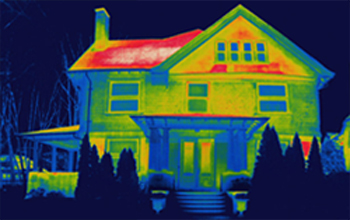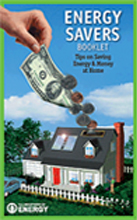Reduce the amount of the Earth’s resources that we use.
Reuse Don’t just trash can it, could someone else make use of it?
Recycle Can the materials be made into something new?
The first green strategy any family can easily implement is to prepare a waste management program. All it takes is a little knowledge to understand the importance of waste reduction to the environment. So critical is this that reducing waste has been of paramount importance to the EPA due to the increased burden on our waste disposal sites. The environmental havoc created by landfills not only jeopardizes ecosystems but also increases the amount of deadly toxic gases released to the atmosphere, as well as polluting our freshwater supplies. As the population in the U.S. grows, more land will be required to handle the increased amount of waste being generated. The best way to accomplish waste reduction is to reduce waste by reusing and recycling waste. This can be done in many ways and the EPA website has plenty of information regarding waste reduction and resource conservation.
Reusing products and materials we generally send to the waste stream is being made easier today. Reuse and recycling centers are sprouting up all over the country to take in articles such as building materials, clothing, appliances, batteries and just about any material or product that someone else may have a use for. The Salvation Army and Goodwill Industries are prime examples of reuse centers, and private enterprise is recognizing the financial rewards associated with collecting and reselling. The benefits of this green strategy are enormous. Most importantly, waste management extends the life cycle of the material or product, thereby reducing the product’s embodied energy. Embodied energy is the amount of energy required to extract, harvest, manufacture and deliver the product to market. Instead of being a cradle-to-grave (takes, makes, wastes) product, it becomes a cradle-to-cradle product. Think about this the next time you summarily discard an article of clothing or something that is no longer of value to you. How much of our natural resources were required to produce that article? Is there someone less fortunate who could put this to good use? Or was someone looking to buy something very similar to that which you no longer need, yet this material still has some useful life remaining. It may save a tree, a few gallons of water, a few tons of fossil fuel or the home to a nest of birds or squirrels, somewhere.
There are two types of recycled materials. Preconsumer recycled content material and postconsumer recycled content material.
Preconsumer content is that which is scrap material generated at the source or manufacturer and has never reached the consumer. Typical items such as metal shavings, wood chips, carpet materials, denim fabric, paper mill products, or any off-fall or scrap material the manufacturer does not reuse for the same purpose. A landscaper may pick up wood chips from a lumber mill to use for mulching landscape beds. Those scraps of denim fabric can be reused for building insulation.
On the other hand, postconsumer content are materials which have been manufactured and delivered to the consumer market, used and no longer serve a useful purpose to the consumer. A remodeled kitchen may find the old cabinets set out curbside for someone to pick up and recycle. Many products manufactured today consist of a combination of preconsumer and postconsumer recycled content. Recycle centers are widely available today that separate waste into specific groups that can be reused or remanufactured. It cannot be overstated how critical it is to Reduce, Reuse and Recycle. Again, remember that your discarded items caused a reduction to one or more of our natural resources as well as wreaking havoc extracting the materials, used natural resources in manufacturing and delivering the product while also releasing carbon dioxide into the atmosphere.
According to the EPA, yard trimmings and food residuals together constitute 26 percent of the U.S. municipal solid waste stream. That’s a lot of waste to send to landfills when it could become useful and environmentally beneficial compost instead.
Here is an interesting list of facts about recycling, according to DOSOMETHING.ORG:
- The average American uses 650 pounds of paper each year – 100 million tons of wood could be saved each year if all that paper was recycled.
- Americans use 2.5 million plastic bottles every hour.
- A typical family consumes 182 gallons of soda, 29 gallons of juice, 104 gallons of milk, and 26 gallons of bottled water a year. That’s a lot of containers that can all be recycled!
- About 80% of what Americans throw away is recyclable, yet our recycling rate is only 28%.
- Every month Americans throw out enough glass bottles and jars to fill up a giant skyscraper (think: Empire State Building), but all of these jars are recyclable!
- Plastic bags and other plastic garbage thrown into the ocean kill as many as 1,000,000 sea creatures a year! Ever heard of the Great Pacific Garbage Patch? It’s twice the size of Texas and is floating somewhere between San Francisco and Hawaii. It’s also 80 percent plastic, and weighs in at 3.5 million tons.
- Recycling one ton (about 2,000 pounds) of paper saves 17 trees, two barrels of oil (enough to run the average car for 1,260 miles), 4,100 kilowatts of energy (enough power for the average home for six months), 3.2 cubic yards of landfill space, and 60 pounds of pollution.
- The 17 trees saved by recycling one ton of paper can absorb a total of 250 pounds of carbon dioxide out of the air each year.
- If all of our newspapers were recycled, we could save about 250 million trees each year! If every American recycled just one-tenth of their newspapers, we could save about 25 million trees each year.
- 10. More than 20 million Hershey’s Kisses are wrapped each day, using 133 square miles of aluminum foil. Believe it not, ALL that foil is recyclable, but not many people realize it so most it goes in the trash!
- 11. Recycling one aluminum can saves enough energy to run a TV for three hours. In spite of this, Americans throw away enough aluminum to rebuild our entire commercial fleet of airplanes every three months!
Granted, reducing the amount of waste we generate offers us little, if any, financial benefit. But when you fully understand the positive results it has to our environment with little effort or cost, it should be everyone’s first step toward responsible environmental stewardship. Even those who have no interest in green lifestyles should find little argument for not supporting waste management.






























